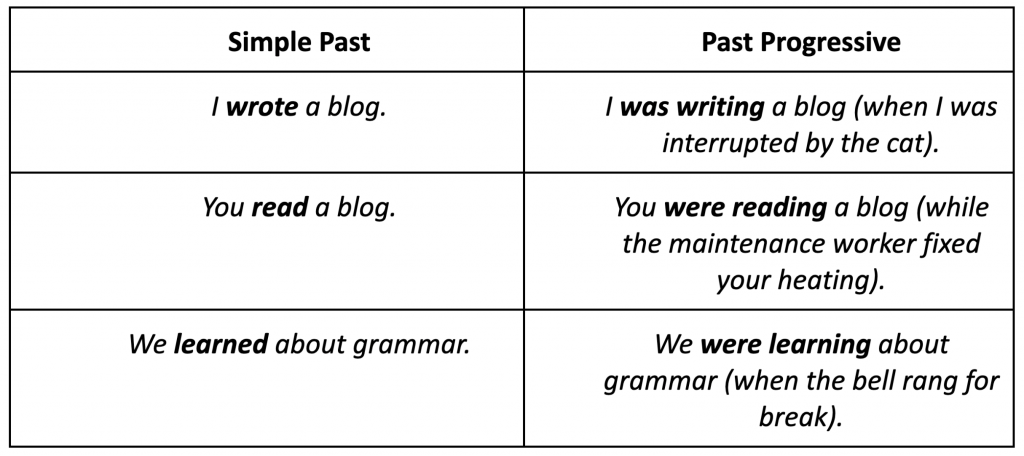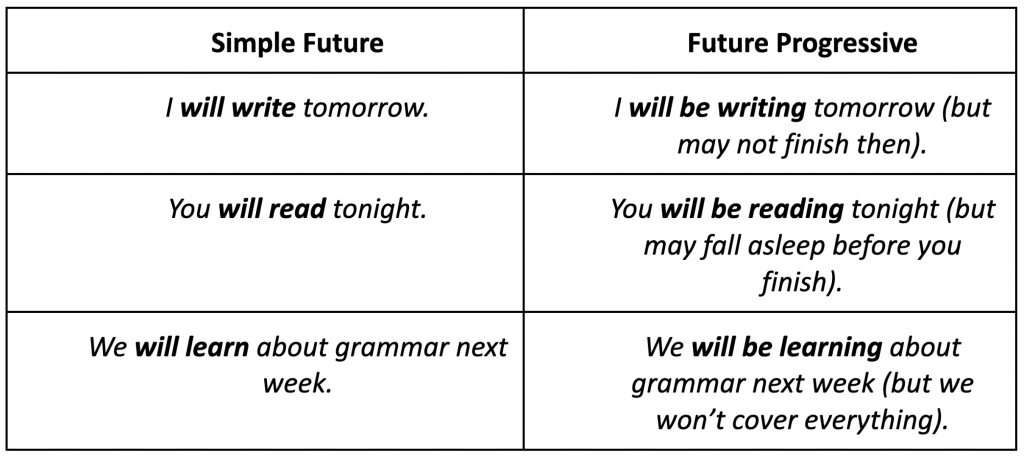
-
3-minute read
-
13th November 2022
Grammar Tips: Progressive Aspect
You probably know that the English language has three tenses (past, present, and future), but did you know that, for each of these tenses, there are four different aspects (simple, perfect, progressive, and perfect progressive)?
The simple aspect of each tense describes actions, facts, and habits, but it can sound blunt. What if you need to describe the ongoing, incomplete nature of an action in your writing? This is where the progressive aspect (sometimes referred to as the continuing aspect) comes in.
How to Recognize the Progressive Aspect
Perhaps you’ve never heard of the progressive aspect, but you’ll probably recognize it when you see it, and it’s easy to form:
simple past, present, or future form of the verb to be
+
[present participle of the action verb]
(The present participle of a verb is the form that ends with “-ing.”)
Let’s see how this works with some examples.
Present Progressive
Used in the present tense (using the simple present form of the verb to be + the present participle of the action verb), the progressive aspect demonstrates that whatever activity you’re describing isn’t done yet. Compare the sense given by the following:
Find this useful?
Subscribe to our newsletter and get writing tips from our editors straight to your inbox.
Subscribe to Beyond the Margins and get your monthly fix of editorial strategy, workflow tips, and real-world examples from content leaders.

Past Progressive
Used in the past tense (using the simple past form of the verb to be + the present participle of the action verb), the progressive aspect can be used to describe an activity that was ongoing and incomplete at a certain point in the past, an action that happened at the same time as something else, or an action that was interrupted (and therefore incomplete).

Future Progressive
Used in the future tense (using the simple future form of the verb to be + the present participle of the action verb), the progressive aspect can be used to describe an activity that will start at some point in the future and continue for an uncertain length of time (and therefore doesn’t hint at its completion).

Progressive Aspect in Action
Now that you know how to recognize it, you’ll see it everywhere:
● It would suggest far less of an achievement if, instead of “I’m Still Standing,” Elton John and Bernie Taupin had written simply “I stand.”
● In a 1995 film, one of the main characters slept (or rather, was in a coma) through the bulk of the action that happened, hence the title While You Were Sleeping.
● Knowing that using the progressive aspect for the future tense shows an ongoing situation, you can perhaps appreciate that the song “I’ll Be Missing You” (Faith Evans and Sean Combs) promises so much more than if they’d gone with “I will miss you.”
Proofreading and Editing
Use the progressive aspect in your own writing when blunt facts are not appropriate and you want to show a continuing or incomplete action, whether in the past, present, or future. If you’re still not sure, or if you’d simply like to have your writing checked by language experts, why not try our services for free?




